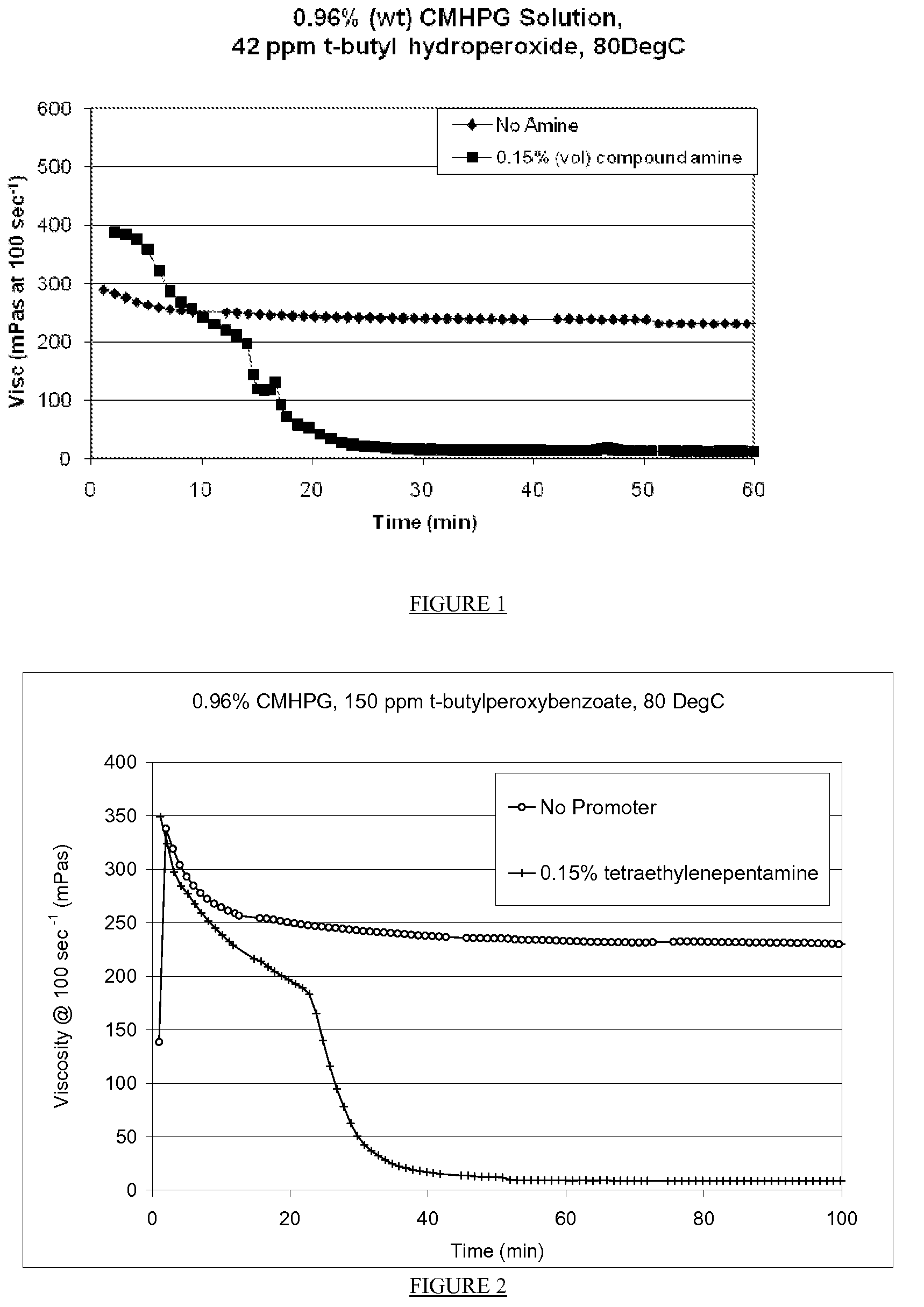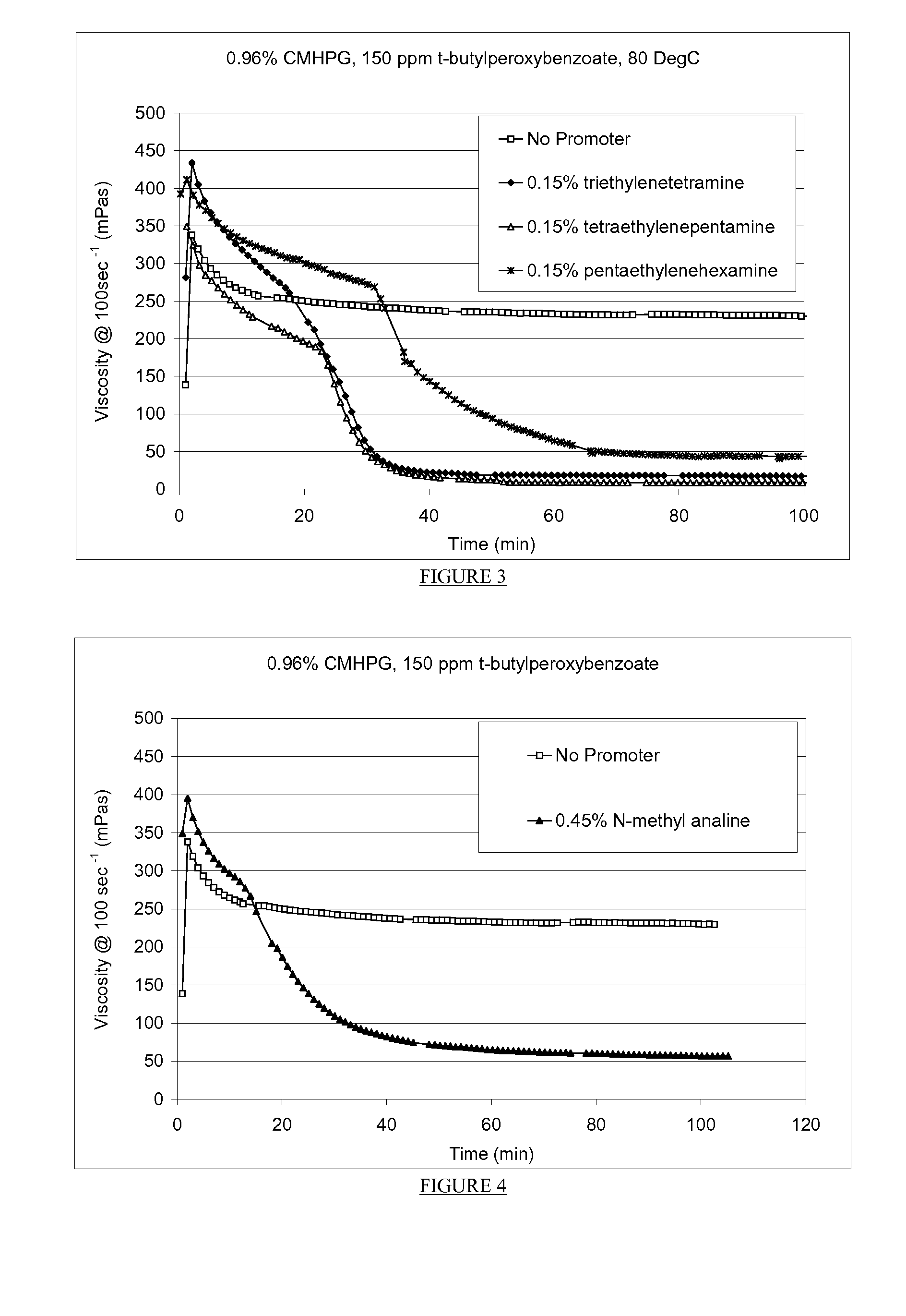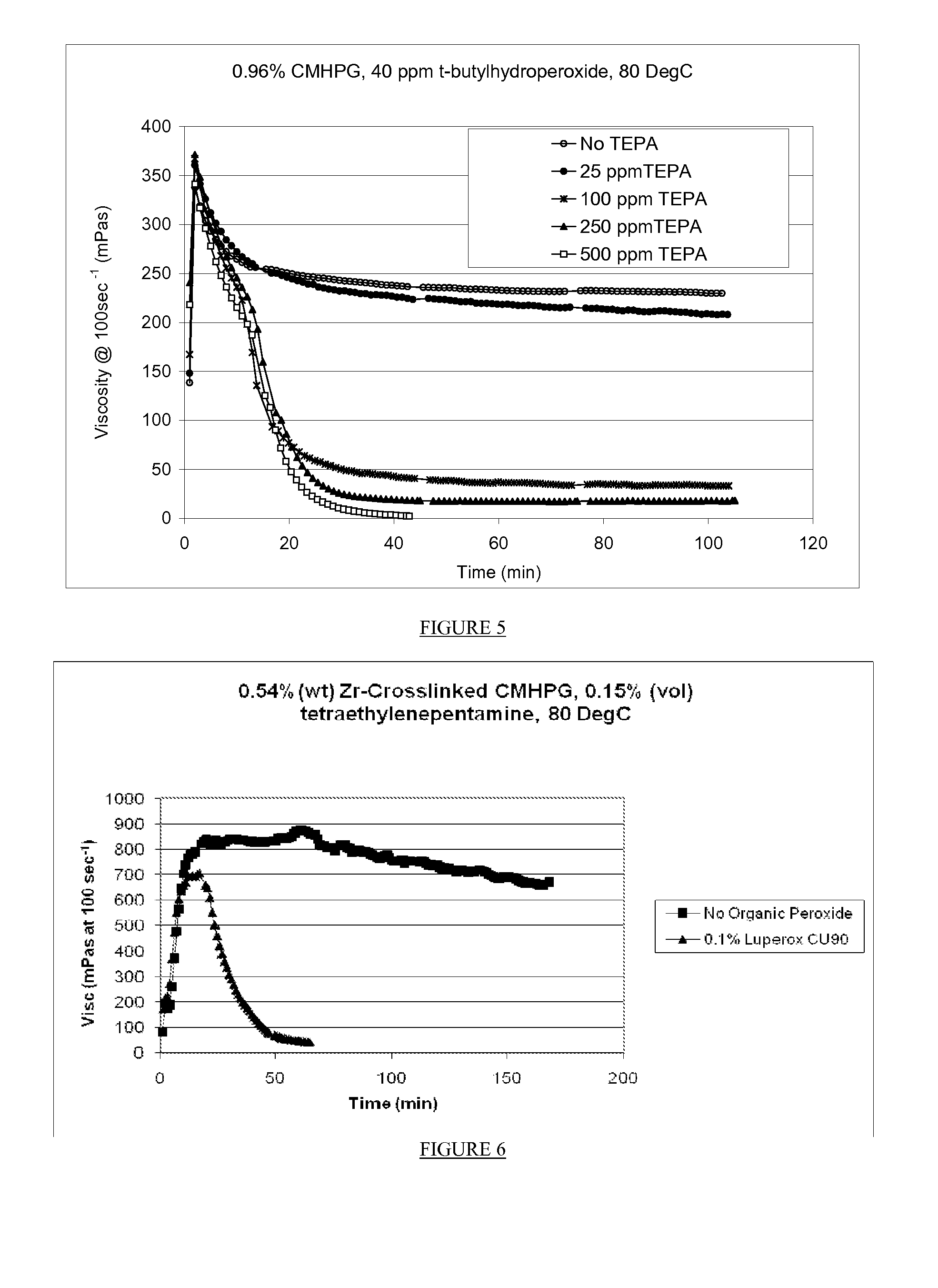Viscosity reduction
a technology of viscosity and reduction, applied in the field of viscosity reduction, can solve the problems of insufficient effectiveness or usability of breakers, complex break mechanisms involved, and inability to accurately achieve the effect of reducing the effective concentration of peroxid
- Summary
- Abstract
- Description
- Claims
- Application Information
AI Technical Summary
Benefits of technology
Problems solved by technology
Method used
Image
Examples
example 1
[0108]Activation of a low concentration organic peroxide breaker (42 ppm t-butyl hydroperoxide) with 0.15 volume percent tetraethylenepentamine (TEPA). Polymer-peroxide stock solutions with and without TEPA were analyzed for breaker effectiveness. A 0.96 weight percent solution of carboxymethylhydroxypropyl guar (CMHPG) was prepared and hydrated in a 1-liter WARING blender. Separately, t-butyl hydroperoxide supplied as LUPEROX TBH70X (70% active) was diluted to a 1% solution in deionized water. For the baseline without any TEPA, 200 ml of the CMHPG solution were poured into a 500 ml WARING blender cup, and 1.2 ml of the diluted LUPEROX TBH70X were added with stirring. The solution was then loaded into a GRACE M5500 rheometer, and tested at 80° C. with the cup 1 and bob 5 concentric cylinder geometry. The fluid was observed for breaking, which would be observed as a marked reduction in viscosity, e.g. to under 100 mpa-s. No breaking was observed in 60 minutes, as shown in FIG. 1. Sim...
example 2
[0109]Activation of a low concentration peroxyester breaker (150 ppm t-butyl peroxybenzoate) with TEPA. In this example, the organic peroxide, LUPEROX P, supplied by Aldrich, was first dissolved in ESCAID 110 mineral oil supplied by Exxon-Mobil at a 3% concentration. The same procedure was used as in Example 1, and the results are seen in FIG. 2. Ethylene amines such as TEPA effectively activated low-concentration peroxyesters such as t-butyl peroxybenzoate.
example 3
[0110]Activation of 150 ppm t-butyl peroxybenzoate at 80° C. with 0.15% (vol) of various amine compounds of the general formula H2N((CH2)2—NH)n—H with n ranging from 3 to 5. The procedure of Example 2 was repeated without activator and with 0.15 volume percent of triethylenetetramine (TETA), TEPA and pentaethylenehexamine (PEHA). The rheometry curves in FIG. 3 show that each ethyleneamine was an effective activator of the peroxyester.
PUM
| Property | Measurement | Unit |
|---|---|---|
| pH | aaaaa | aaaaa |
| weight percent | aaaaa | aaaaa |
| density | aaaaa | aaaaa |
Abstract
Description
Claims
Application Information
 Login to View More
Login to View More - R&D
- Intellectual Property
- Life Sciences
- Materials
- Tech Scout
- Unparalleled Data Quality
- Higher Quality Content
- 60% Fewer Hallucinations
Browse by: Latest US Patents, China's latest patents, Technical Efficacy Thesaurus, Application Domain, Technology Topic, Popular Technical Reports.
© 2025 PatSnap. All rights reserved.Legal|Privacy policy|Modern Slavery Act Transparency Statement|Sitemap|About US| Contact US: help@patsnap.com



